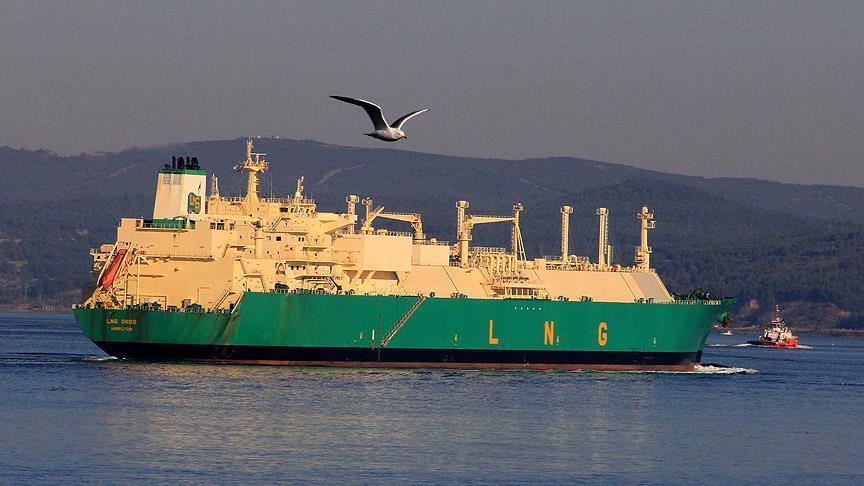Pipeline gas is losing its dominant role in the global gas trade. The International Energy Agency’s statistics show that LNG constituted approximately 40 percent of global gas trade in 2016, and by 2040 it is projected to reach as much as 60 percent. In Asia, in particular, global LNG trend looks promising with growing energy demand and with the switch from coal to gas. In recent years, however, due to the so-called ‘Asian Premium’- charging variable shipping prices to various regions of the world - LNG demand has become sluggish. Among the many Northeast Asian LNG consuming countries, South Korea is the one that has reassessed its energy mix and decided to switch more towards renewables and away from coal, nuclear and natural gas.
The Asian Premium has long been a big financial burden for Asia’s LNG consuming countries. The 2011 Fukushima disaster, which caused an astronomic increase in LNG demand at the time, forced Japan to seek different alternatives to finance its growing trade deficit due to high LNG prices. This has been the case for South Korea after two consecutive strong earthquakes, which occurred back in 2016. The South Korean President decided to suspend nuclear reactors as a result of the natural disasters, and this paved the way for strong LNG demand growth. Despite an annual LNG consumption growth of 12 percent to 38 million tonnes in 2017 as a consequence of the disasters, South Korea has made a policy shift in diversifying its LNG supply sources with greater deployment of renewable energy to strengthen its bargaining power.
Concerns over higher LNG prices and increasing trade deficits have forced the South Korean government to initiate cooperation with Northeast Asian countries. To strengthen bargaining power and overcome the Asian Premium financial burden, a cooperation initiative between Korea, Japan China in LNG was agreed in 2015. This cooperation ensured more competitive LNG pricing, sending a powerful signal to LNG exporting countries.
The South Korean cooperation initiative aimed at achieving co-prosperity between Korea, Japan China to enhance liquidity and efficiency for a stronger LNG market in Northeast Asia. Despite its well-meaning mission, so far this cooperation has proved not to be as effective as planned. The global economic slowdown, increasing share of renewables in the energy mix and a policy shift towards nuclear are some of the impediments to achieving better results from this cooperation. However, unless a consensus is reached among these players to instigate bold measures to achieve their aims, they are unlikely to achieve more competitive and affordable LNG prices.
For many years, Northeastern Asian countries paid US$8 per million British thermal unit (MMBtu), which many energy market experts consider unaffordable over the long term. With this pricing level, experts consider it unlikely that LNG will be able to compete with coal or with renewables, such as solar or wind.
With LNG pricing levels that are unaffordable, not only would consuming countries diminish their gas demand and switch to alternatives, but also exporter countries would find it hard to finance their new LNG projects in the region because of diminishing gas demand. Therefore, a viable price for high-income countries set below $ 8 USD/MMBtu and below $6/MMBtu for lower-income countries would be advisable to reinvigorate LNG demand while favorably competing with nuclear, coal or renewable energy alternatives.
With environmental protection and energy security at the cornerstone of the new global energy agenda, and in response to meeting greater energy demand with relatively safe and environmentally-friendly sources, Northeastern Asian countries have focused until recently on increasing LNG. However, renewable energy has also gained increased market share. For instance, South Korea’s gas consumption stood at around 2 million tons in 1987 and reached 36 million tons in 2017. While consumption reached its historic peak in 2013 with 40 million tons, the sluggish global economic growth along with high LNG prices, saw demand fall and crash. Consequently, the prospects for LNG in Asia’s northeast do not look very promising for the time being.
Despite LNG taking a greater share of the energy mix in Northeastern Asian countries, it will not be able to stem the tide towards renewables or nuclear without fundamental changes in the pricing mechanism or without a reinvigorated global economy. South Korea’s initiative could prove effective against the Asian Premium although it has shown limited progress. But the current projections suggest the future of LNG demand in the region is not encouraging. Unless optimal pricing levels are reached between LNG consuming and exporting countries, LNG growth expectations will need to be lowered.
- Opinions expressed in this piece are the author’s own and do not necessarily reflect Anadolu Agency's editorial policy.


